Introduction
Thai cuisine is celebrated globally for its vibrant flavors, aromatic herbs, and the perfect balance of sweet, sour, salty, and spicy elements. From the bustling streets of Bangkok to fine dining restaurants worldwide, Thai dishes have captivated the hearts and palates of food lovers everywhere. Among these delightful offerings, Thai Red Curry Noodle Soup stands out as a comforting, flavorful dish that warms the soul and tantalizes the taste buds.
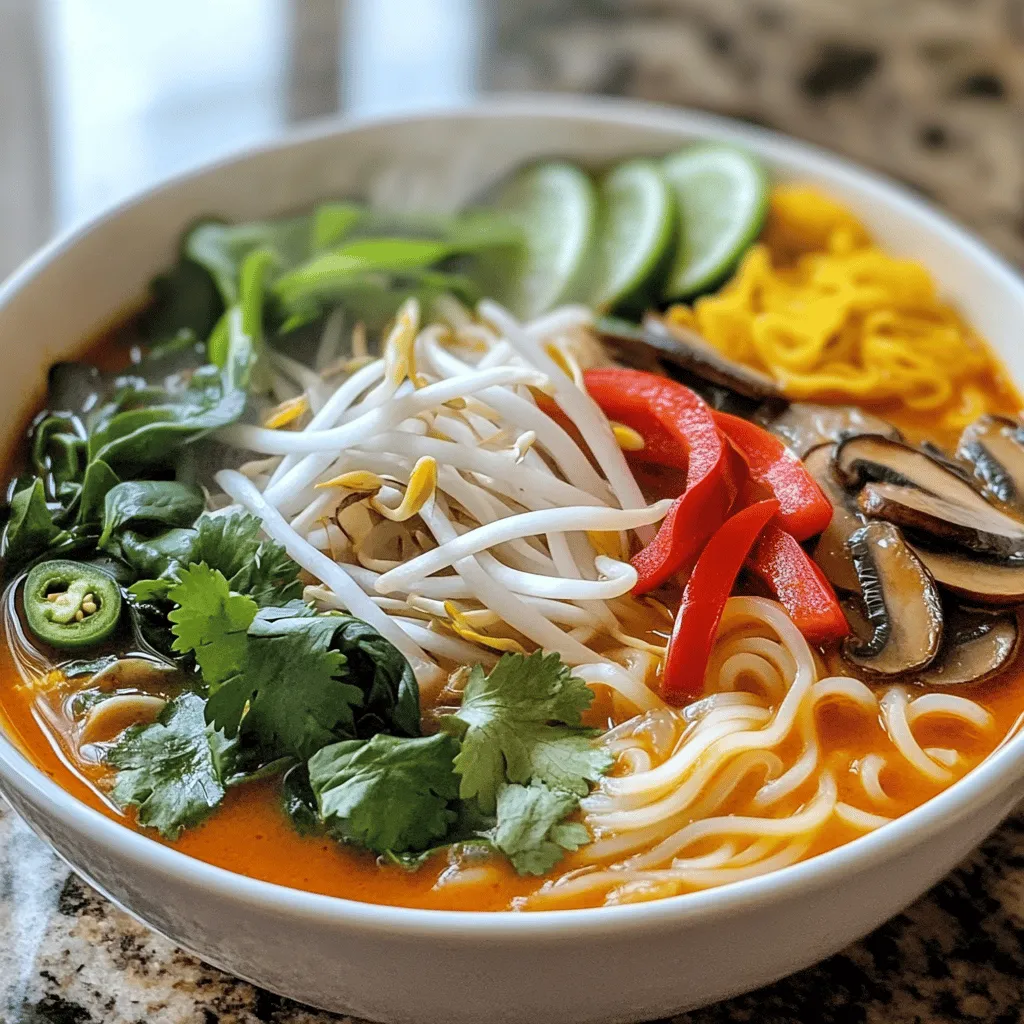
This exquisite noodle soup is a symphony of spices and textures, making it a staple in many households. Whether you’re looking for a satisfying meal after a long day or a dish to impress guests, this recipe is sure to please. One of the best aspects of Thai Red Curry Noodle Soup is its versatility. It can easily be adapted to suit various dietary preferences, including vegetarian and gluten-free options. This flexibility allows everyone to enjoy a bowl of this delightful soup, regardless of their dietary restrictions.
Additionally, one of the reasons this recipe is so appealing is its ease of preparation. With a quick cooking time, you can have a delicious, homemade meal on the table in under 30 minutes, making it perfect for busy weeknights or spontaneous gatherings.
Understanding Thai Red Curry
To truly appreciate the richness of Thai Red Curry Noodle Soup, it’s essential to understand the key components of the dish, starting with the star of the show: red curry paste. This vibrant paste is a blend of various ingredients, including red chili peppers, garlic, lemongrass, galangal, and kaffir lime leaves. The result is a complex flavor profile that adds depth and warmth to the soup. The spiciness of the red curry paste can vary by brand, so it’s a good idea to taste as you go to achieve your desired heat level.
Another crucial ingredient that enhances the soup’s flavor and texture is coconut milk. Known for its creamy and rich consistency, coconut milk is a staple in Thai cooking, providing a luxurious base for the soup. It not only adds a velvety smoothness but also balances the heat from the curry paste, creating a harmonious blend of flavors.
Thai cuisine is renowned for its balance of flavors. Dishes often incorporate a combination of sweet, salty, spicy, and sour elements. In this soup, the sweetness from the coconut milk melds with the saltiness of the soy sauce and fish sauce, while the fresh vegetables add a touch of crunch and vibrancy. This interplay of flavors is what makes Thai food so unique and enticing.
Ingredients Breakdown
The success of Thai Red Curry Noodle Soup lies in the careful selection of ingredients. Each component plays a vital role in creating a dish that is both delicious and visually appealing. Below is a detailed description of each ingredient you’ll need to prepare this delightful soup.
Red Curry Paste
Red curry paste is the foundation of this dish, providing it with its signature flavor. You can find various brands of red curry paste at your local grocery store, but for those looking to experiment, making your own at home is a fantastic option. A homemade paste allows you to control the ingredients and adjust the heat to your liking. Typically, red curry paste consists of red chilies, garlic, lemongrass, galangal, shallots, and spices.
Coconut Milk
Coconut milk is the heart of the soup, lending it a rich and creamy texture. When selecting coconut milk, you’ll find two main types: light and full-fat. While light coconut milk is lower in calories and fat, it may not provide the same level of creaminess as full-fat coconut milk. For this recipe, full-fat coconut milk is recommended for a luxurious mouthfeel, but feel free to use light coconut milk if you’re looking to reduce calories.
Broth
The choice of broth significantly impacts the overall flavor of the soup. You can use either vegetable broth for a vegetarian option or chicken broth for a richer taste. Both options complement the red curry paste and coconut milk beautifully, so choose based on your dietary preference.
Rice Noodles
Rice noodles are the perfect vehicle for absorbing all the delicious flavors in the soup. Available in various widths, from thin vermicelli to thick rice noodles, you can choose according to your preference. When cooking rice noodles, be sure to follow the package instructions for the best results. Typically, they require soaking in hot water rather than boiling, which helps maintain their delicate texture.
Soy Sauce and Fish Sauce
Both soy sauce and fish sauce are essential for adding umami and depth to the soup. For a vegetarian version, you can use soy sauce or tamari, which is gluten-free. Fish sauce is a traditional ingredient in Thai cuisine, imparting a unique flavor. If you’re avoiding fish sauce, consider using a combination of soy sauce and a splash of lime juice for a similar effect.
Fresh Vegetables
Fresh vegetables not only add color and texture but also bring nutritional benefits to the dish. Common vegetables used in Thai Red Curry Noodle Soup include bell peppers, carrots, and spinach. Bell peppers add a sweet crunch, while carrots provide a slight earthiness. Spinach not only enhances the visual appeal but also contributes vitamins and minerals. Feel free to customize with your favorite vegetables or whatever you have on hand.
Optional Ingredients for Customization
For those looking to spice things up, consider adding sliced jalapeños for an extra kick. Additionally, fresh herbs like Thai basil can elevate the flavor profile further, imparting a fragrant aroma that pairs beautifully with the soup.
With these ingredients at your disposal, you’re well on your way to creating a hearty and satisfying bowl of Thai Red Curry Noodle Soup. The next steps will guide you through the preparation and cooking process, ensuring that you achieve the perfect balance of flavors and textures in this delightful dish. Stay tuned for the detailed cooking instructions that will bring your culinary adventure to life!
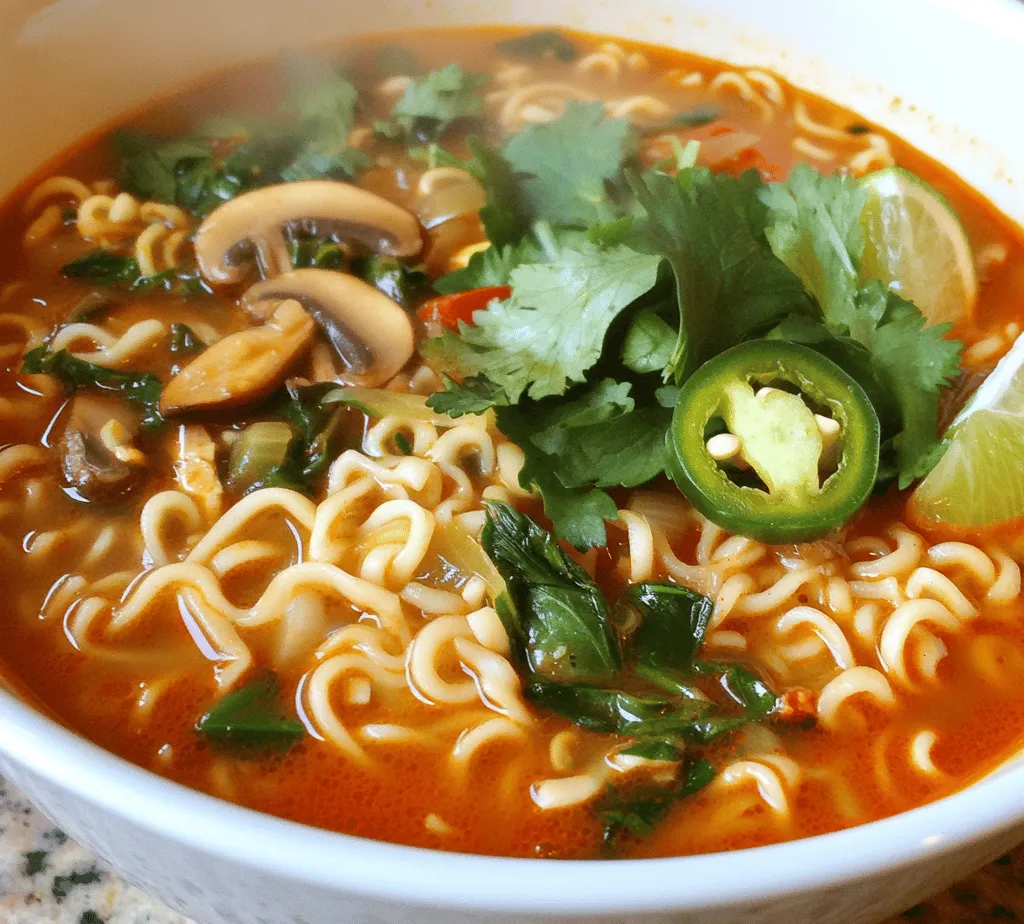
Step-by-Step Cooking Instructions
Base Preparation: Importance of Sautéing Curry Paste for Flavor Development
The foundation of your Thai Red Curry Noodle Soup begins with the essential step of sautéing the curry paste. Start by heating a tablespoon of oil in a large pot over medium heat. Once the oil is shimmering, add the red curry paste. Sauté the paste for about 2-3 minutes until it becomes fragrant and releases its vibrant aroma. This process not only enhances the flavor but also activates the spices and herbs contained in the paste, ensuring that every spoonful of your soup is bursting with authentic Thai flavor.
Adding Liquids: Balancing Textures and Flavors with Coconut Milk and Broth
After sautéing the curry paste, it’s time to add the liquids that will form the base of your soup. Gradually pour in 4 cups of vegetable or chicken broth, stirring to combine. Next, add 1 can (13.5 ounces) of coconut milk, which will provide the soup with its signature creaminess and rich flavor. The combination of broth and coconut milk balances the dish, creating a luscious texture that coats the noodles beautifully. Bring the mixture to a gentle simmer, allowing the flavors to meld together for about 10 minutes.
Flavors Development: How to Adjust Seasoning to Personal Taste
As your soup simmers, it’s essential to taste it and adjust the seasoning according to your preference. This dish is versatile, so feel free to add a splash of soy sauce or a dash of fish sauce for an umami kick. If you prefer a touch of sweetness, a teaspoon of brown sugar can help round out the spiciness of the curry. For those who enjoy a bit of heat, consider adding a pinch of red pepper flakes or a few slices of fresh chili. Remember, the goal is to create a balance of sweet, salty, and spicy flavors that will delight your palate.
Noodle Cooking: Timing for Perfect Noodle Texture
Noodle cooking can make or break your soup. For this recipe, you can use rice noodles, which are traditional in Thai cuisine. Follow the package instructions for cooking the noodles, but make sure to undercook them slightly, as they will continue to soften in the hot soup. Once your soup has reached a simmer, add the noodles directly to the pot and cook for an additional 3-5 minutes, or until the noodles are tender but still have a slight bite.
Vegetable Addition: Keeping Vegetables Crisp While Enhancing Their Flavors
To ensure your vegetables maintain their vibrant colors and crisp textures, add them just a few minutes before serving. For this recipe, sliced bell peppers, snap peas, and baby corn work beautifully. They should be added to the soup during the last 2-3 minutes of cooking, allowing them to soften slightly while still retaining their crunch. This not only adds a fresh element to your soup but also enhances the overall presentation with colorful veggies peeking through the broth.
Final Touch: Presentation Tips for a Visually Appealing Dish
Presentation is key when it comes to serving your Thai Red Curry Noodle Soup. To elevate the dish visually, ladle the soup into bowls, ensuring each serving has an equal distribution of noodles, vegetables, and broth. For a finishing touch, garnish with freshly chopped cilantro, green onions, and a wedge of lime on the side. The brightness of the lime will add a pop of color and provide a fresh burst of acidity to counterbalance the richness of the soup. A sprinkle of toasted sesame seeds or crushed peanuts can also add an appealing crunch.
Serving Suggestions: Ideal Accompaniments
To complement your Thai Red Curry Noodle Soup, consider serving it with lime wedges, which can be squeezed over the soup for added brightness. Fresh herbs such as basil or mint can provide a fragrant garnish that enhances the dish’s authenticity. For those who enjoy a bit of crunch, serve some crispy spring rolls or a side salad dressed with a tangy vinaigrette. A chilled Thai iced tea can also be a delightful pairing, balancing the soup’s warmth with a refreshing contrast.
Nutritional Information
Overview of the Nutritional Benefits of the Dish
This Thai Red Curry Noodle Soup is not only delicious but also packed with nutritional benefits. The use of fresh vegetables provides essential vitamins and minerals, while the coconut milk contributes healthy fats that promote heart health. The ginger and garlic in the curry paste offer anti-inflammatory properties, making this dish a nourishing option for any meal.
Caloric Breakdown Per Serving and Health Benefits of Key Ingredients
A typical serving of this soup contains approximately 300-400 calories, depending on portion sizes and specific ingredients used. The caloric breakdown includes:
- Carbohydrates: Primarily from the noodles, providing energy.
- Proteins: If using chicken or tofu, this will contribute to muscle repair and growth.
- Fats: The coconut milk offers medium-chain triglycerides, which can be beneficial for metabolism.
The combination of these ingredients makes for a balanced meal that’s satisfying and nutritious.
Discussion on Potential Dietary Modifications
This recipe is easily adaptable for various dietary preferences. For a gluten-free version, simply choose gluten-free rice noodles and ensure that your curry paste and broth are also gluten-free. Vegans can replace chicken or fish sauces with soy sauce or miso paste, and opt for tofu or additional vegetables as protein sources. This flexibility allows everyone to enjoy the delightful flavors of Thai cuisine.
Cultural Significance of Thai Noodle Soups
Historical Context of Noodle Soups in Thai Cuisine
Noodle soups hold a special place in Thai cuisine, with a rich history that reflects the cultural influences of neighboring countries. Originally inspired by Chinese culinary traditions, Thai noodle soups have evolved into a beloved staple in Thai households, often enjoyed as a comforting meal at any time of day. Each region in Thailand boasts its own unique variations, showcasing local ingredients and flavors.
Regional Variations of Noodle Soups in Thailand
From the spicy boat noodles of Bangkok to the comforting Khao Soi of northern Thailand, noodle soups vary significantly across the country. Each region boasts its own signature dishes, often reflecting the local culture and available ingredients. For instance, southern Thailand is known for its coconut-based curries, while the north leans towards the use of fresh herbs and spices. This diversity is a testament to the rich culinary heritage of Thailand and the adaptability of noodle soups to different palates.
Personal Anecdotes or Insights into Enjoying Noodle Soup in Thailand
Many travelers to Thailand often recount their experiences of enjoying noodle soups from bustling street vendors or local markets, where the atmosphere is filled with the enticing aroma of spices. The experience of slurping noodles while savoring the vibrant flavors is not just a meal; it’s a cultural immersion. The communal aspect of sharing a pot of noodle soup with friends and family is a cherished tradition, highlighting the importance of food in Thai social gatherings.
Conclusion
In summary, the Thai Red Curry Noodle Soup Delight is a perfect blend of flavor, nutrition, and ease of preparation. This dish encapsulates the essence of Thai cuisine, offering a comforting bowl that warms the soul while providing a nutritional punch. Whether you’re a seasoned cook or a novice in the kitchen, this recipe invites you to explore the vibrant world of Thai flavors.
I encourage you to try your hand at making this soup, allowing the rich aromas and colors to inspire your culinary creativity. Each bowl you serve is not just a meal but an invitation to appreciate the beauty of Thai cuisine and its cultural significance. Enjoy the process of cooking and the delightful experience of sharing this dish with family and friends. Let the flavors of Thailand come alive in your kitchen with this simple yet delightful soup!
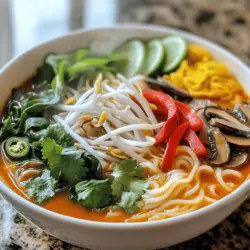




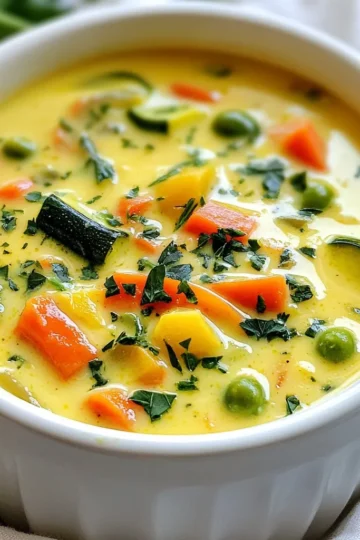
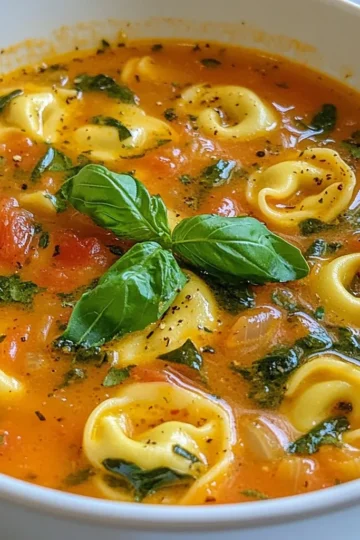
Leave a Reply